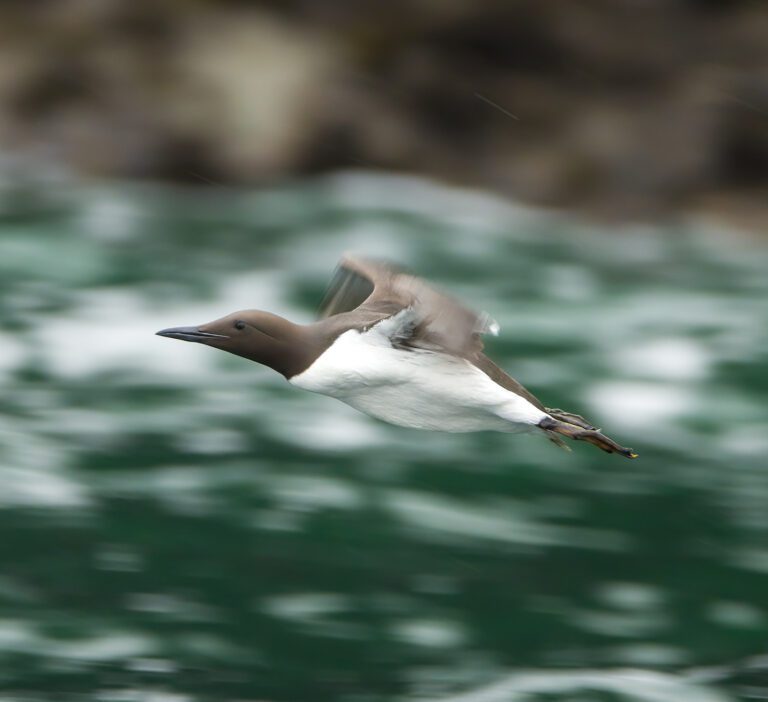The guillemot is a dark chocolate and white coloured seabird which can usually found on Cornwall’s steep coastal ledges and you can notice a Guillemot colony from a distance as they can be noisy birds!
The female Guillemots lay just one egg per year and, once the chick reaches three weeks old, they are encouraged to dive off the cliff edge and spend the rest of maturity with their father, learning to catch their food by diving into the water utilising their large wings to swim after prey such as fish, crabs and molluscs.
Guillemots are very easy to identify with a darker chocolate upper-body and lower body pure white which comes all the way up to their neckline. Although in the winter Guillemots tend to have white faces.
During the breeding season, we frequently see Guilletmots around our nearby offshore islands which hold some of the largest seabird breeding colonies in Cornwall, full of Guillemots, Razorbills, Cormorants and more Seabirds.
Share with a friend:

Guillemots are capable of diving up to 180 metres deep, while in search of prey in the water.

Book a boat trip during the spring and early summer to have a chance of seeing the Guillemots diving for fish around the coastline of Cornwall and filling rocky ledges as they nest. A fun and safe way to see some amazing scenery and sealife. Our boat trips are a truly magical experience, especially with the amount of Cornish marine wildlife around our coastline.
Guillemots are seabirds that belong to the auk family, which also includes other birds such as puffins and razorbills.
Guillemot chicks plunge into the sea as a way to leave their nesting site and start their life in the water. When the chicks reach around 2-3 weeks old they are unable to fly and must jump off the cliff and into the sea, where they are cared for by their fathers. The fathers take over the care of the chicks once they are in the water, feeding and protecting them until they are old enough to fend for themselves. This behaviour is an important adaptation for survival in the harsh and unpredictable coastal environment where guillemots live.
Guillemots are not considered to be aggressive birds, tending to be relatively peaceful and non-confrontational towards other birds and animals.
Guillemots are protected under the Wildlife and Countryside Act, which prohibits the intentional or reckless disturbance of these birds during the breeding season.
Guillemots in the UK typically spend their winters around the British coast, but further offshore than they are found during the breeding season. Leaving their breeding sites in late summer or early autumn, usually around July or August, they will then return to their breeding colonies in the spring, around March or April.
Guillemots hunt by diving underwater to catch fish and other prey, being strong swimmers they propel through the water in search of food and are able to hold their breath for several minutes at a time. Their flexible skeletons and valves in their ears to help them equalize, allow them to dive to depths of up to 180 metres deep!
Padstow Sealife Safaris give you the chance to get up close and personal with these fascinating creatures. Depending on the time of year that you choose to visit, you’ll have the chance to see a number of different species.